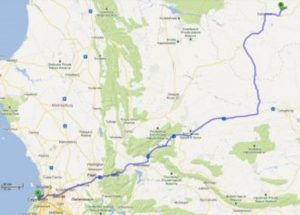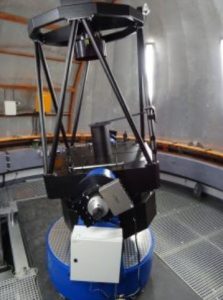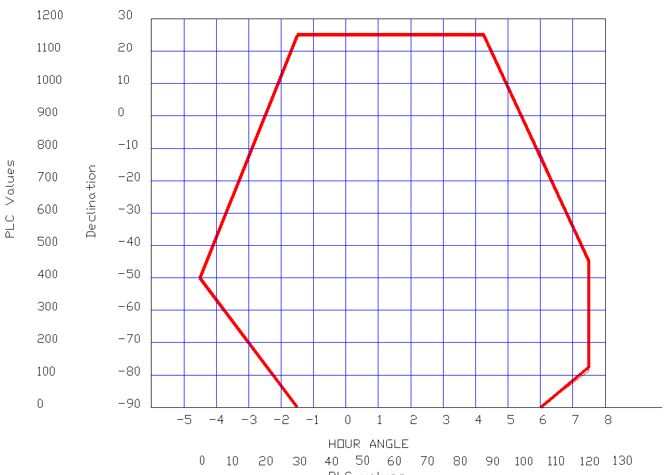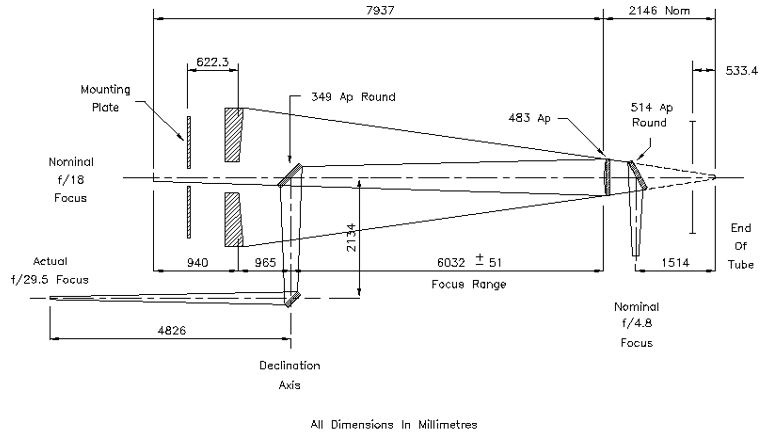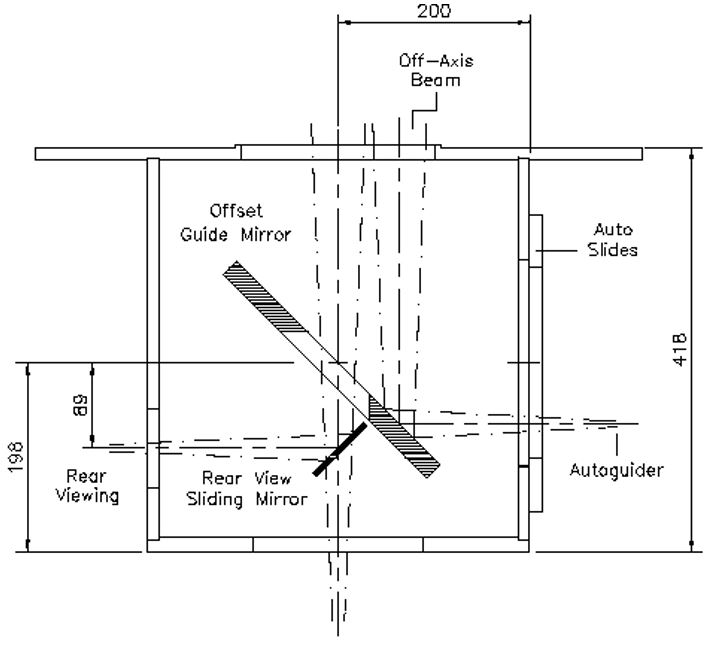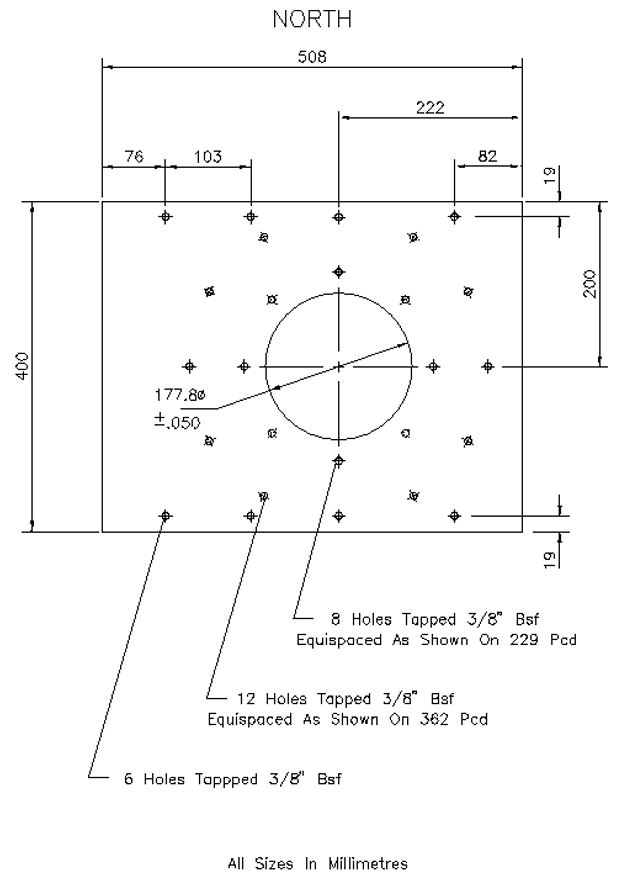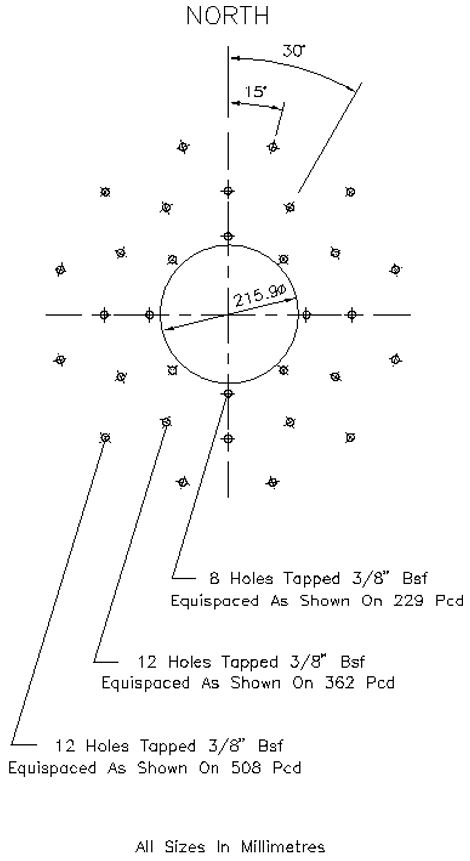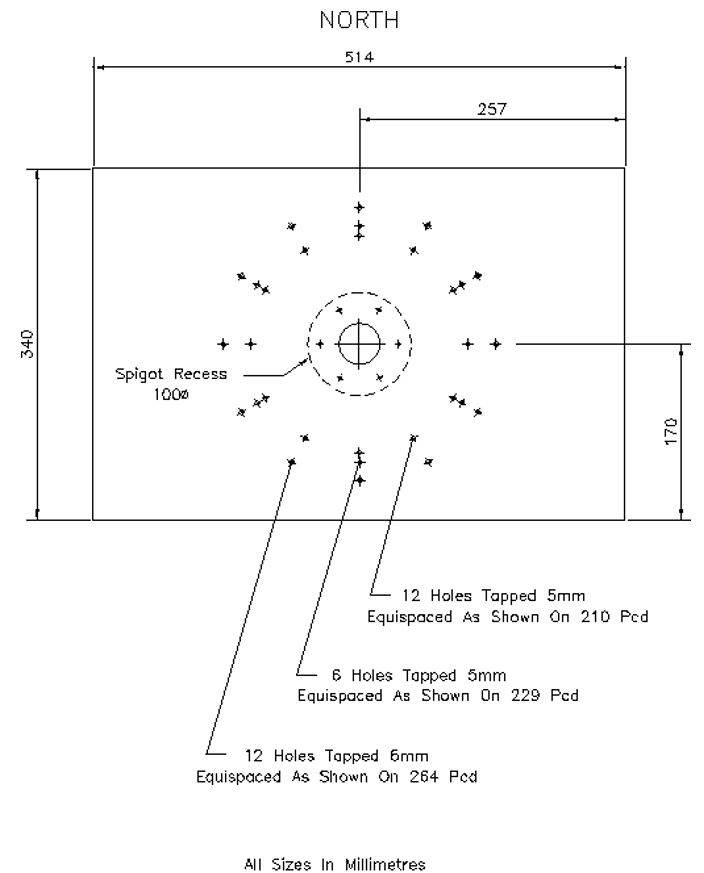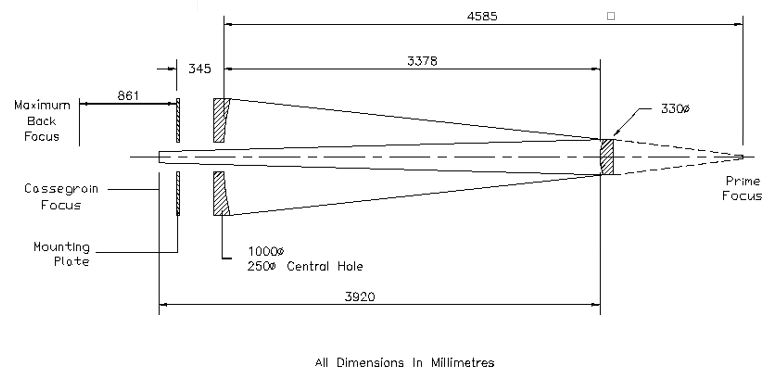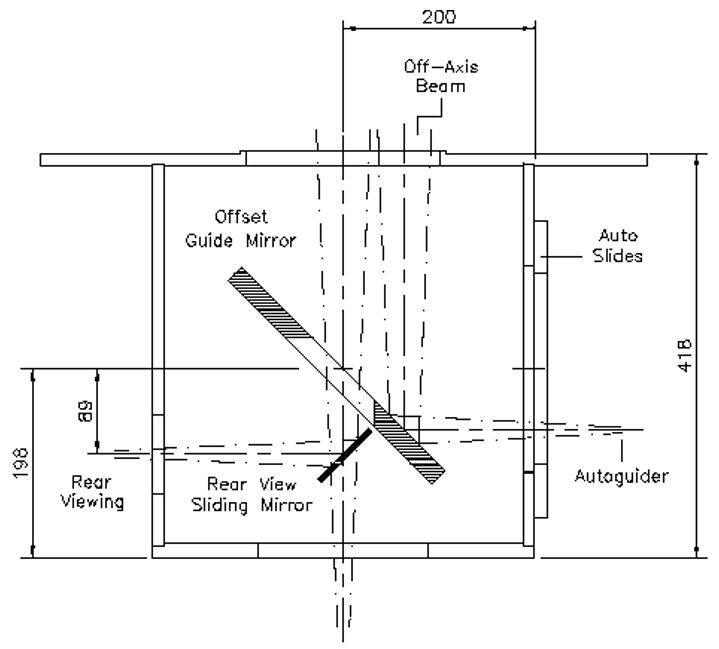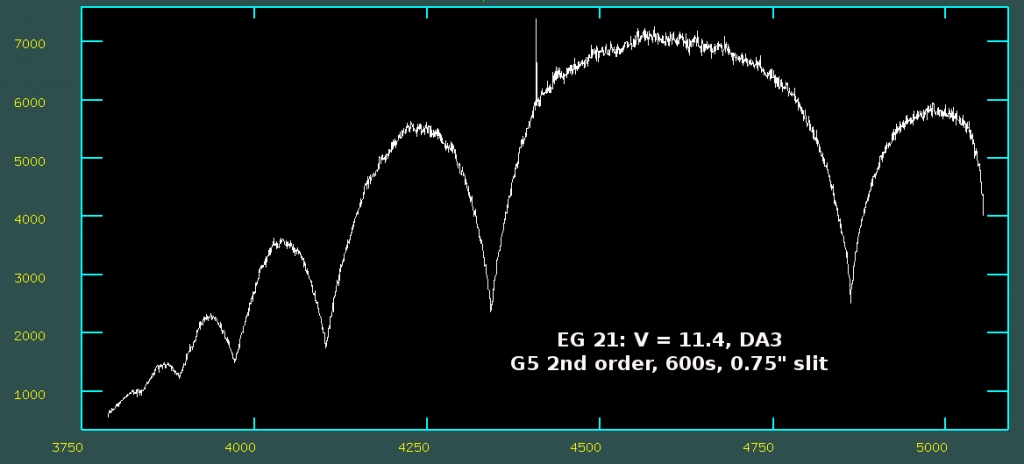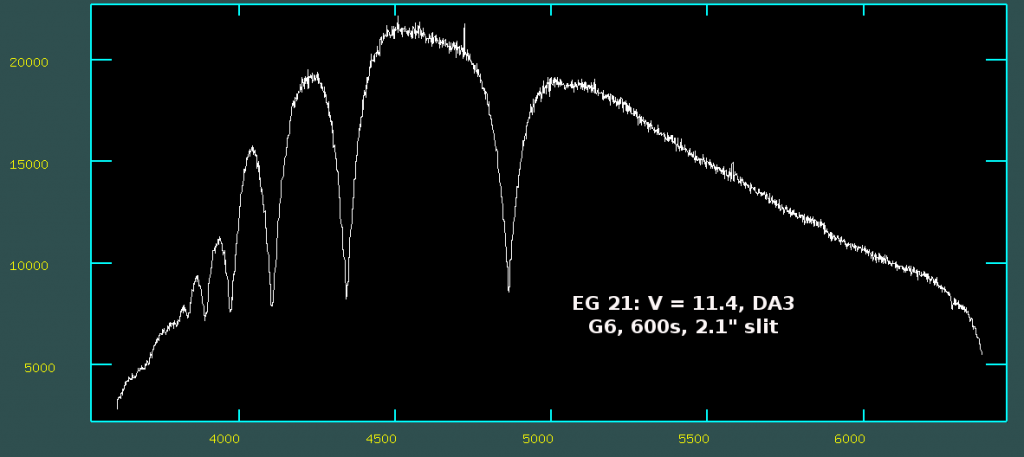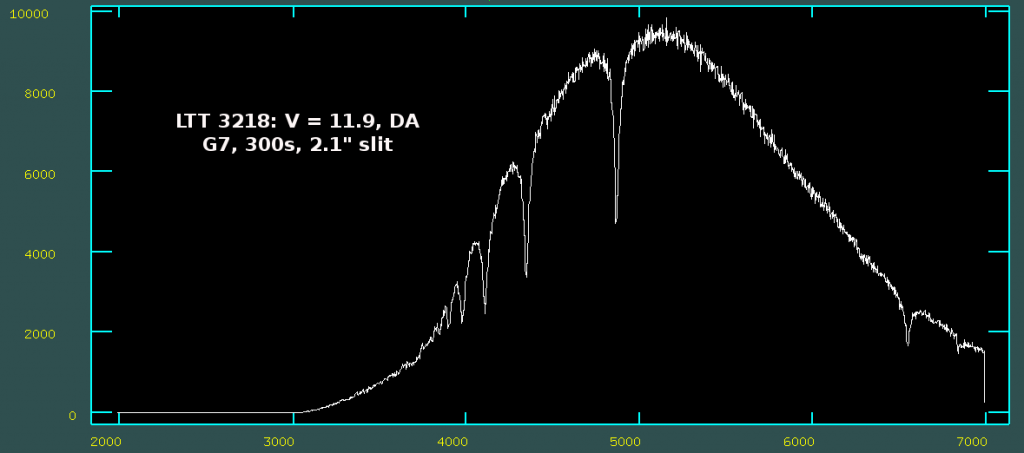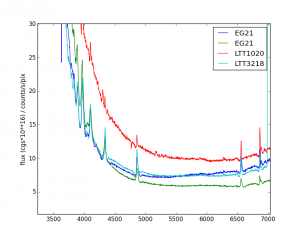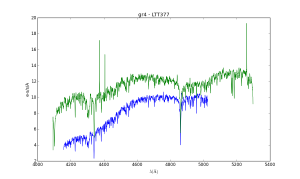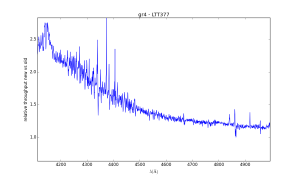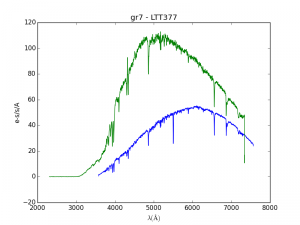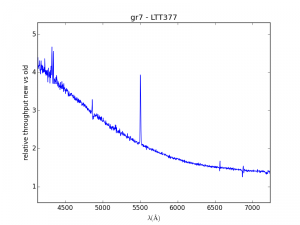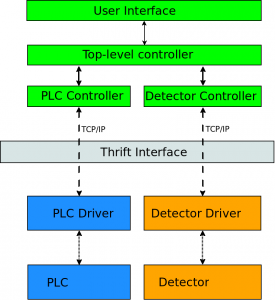The cameras have selection of amplifiers (four different speeds; two conventional and four EM), each having multiple electron to ADU gain settings. Binning and subframing are also user selectable. Operating at the lowest readout speed (lowest read noise) with appropriate binning for Sutherland’s median seeing, a minimum cycle time of ~0.5 seconds is typical. With further binning, windowing and higher readout speed, the cycle time can be decreased to 0.01 seconds. The SHOC 1 and 2 systems contain identical components, except that the cameras have slightly different technical properties (read noise, well depth, etc.). See the SHOC 1 camera specification sheet and the SHOC 2 camera specification sheet.
There is an online calculator to help with estimating observing times, signal-to-noise ratios, and limiting magnitudes.
Current Status & Availability
The instruments are open for general use. The software has been overhauled and integrated during the two years following commissioning, and is now running on a web-based platform with js9 display. Please note the following:
- Use of EM mode is prohibited unless demonstrated competence of this mode is provided, due to the risk of permanent damage to the CCD. Future software will incorporate safeguards to protect the detector in EM mode. In the meantime, observing in EM mode is highly regulated.
- External start mode with the 3 MHz amplifier is not currently available on SHOC 2. Please instead use External timing, a different amplifier, or specifically request SHOC 1.
Observers are invited to apply for time using SHOC on the 1.9-m and 1.0-m telescopes. SHOC 2 is currently mounted on the new 1.0-m telescope at all times. Those new to SHOC must request assistance for the first night of their run; students must be accompanied by their supervisor. Please reference the SHOC instrument paper in your publications (see below).
Filters
Lesedi has its own filter wheel containing Bessell U B V R I and clear filters. Only these filters are available on this telescope at the present time.
For the 1.9-m and original 1.0-m telescopes, the available filter sets are listed below (click on filter name to view transmission curve); there is also an empty slot in each filter wheel for white light observations:
Please be sure to list every filter you require for your program in the GRATINGS AND FILTERS field of the SAAO Telescope Time Application form. This will ensure that your desired filters are scheduled for your run.
Visitor filters up to 51 mm square and 10 mm thick can also be accommodated. Visitors wishing to use their own filters should contact the Head of Telescope Operations (rrs at saao.ac.za) to discuss this when applying for telescope time.
Further Information
Further information can be found on the SHOC commissioning website. Available here are links to the online user manual and the SHOC data reduction pipeline (start with the README!).
Selected publications from commissioning:
- SHOC instrument paper: Coppejans, R. et al., 2013, Characterizing and Commissioning the Sutherland High-Speed Optical Cameras (SHOC), PASP, 125, 976-988
- P. Woudt, et. al., 2012, CC Sculptoris: a superhumping intermediate polar, MNRAS, 427, 1004-1013
- D. Coppejans, et al. 2013, High-speed photometry of faint cataclysmic variables -VIII. Targets from the Catalina Real-time Transient Survey, MNRAS, 437, 510-523
- A.N. Semena, et al., 2014, On the area of accretion curtains from fast aperiodic time variability of intermediate polar EX Hya, MNRAS, 442, 1123-1132.
- D. de Martino et al., 2014, Unveiling the redback nature of the low-mass X-ray binary XSS J1227.0-4859 through optical observations, MNRAS, 444, 3004-3014.
HIPPO: High speed Photo-Polarimeter
HIPPO is SAAO’s newest (2008) high-speed photo-polarimeter. It is capable of high-speed, multi-filtered, simultaneous all-Stokes observations of point sources. Its high-speed capabilities make it especially ideal for investigating rapidly varying astronomical sources such as magnetic cataclysmic variables. HIPPO was designed and built in order to replace its highly successful but ageing single channel equivalent, namely the University of Cape Town (UCT) photo-polarimeter (Cropper 1985).
The instrument makes use of rapidly counter-rotating (10Hz), super-achromatic half- and quarter-waveplates, a fixed Glan-Thompson beamsplitter and two photo-multiplier tubes that record the modulated O and E beams. Each modulated beam permits an independent measurement of the polarisation and therefore simultaneous 2 filter observations. All Stokes parameters are recorded every 0.1sec and photometry every 1 millisecond. Post-binning of data is possible in order to improve the signal. First light was obtained in February 2008.
Current Status & Availability
HIPPO is open for general use on the 1.9m telescope only. Potential applicants should contact the PI (Stephen Potter: sbp at saao dot ac dot za) if first time users or would like to collaborate.
The HIPPO control software runs on a Linux operating system with a real-time linux kernel patch in order to guarantee absolute and relative timing accuracies. On-the-fly preliminary data reduction produces live photometry and polarimetry light curves.
A user manual is available here and a reference manual is available here.
Offline Data Reduction
A set of data reduction algorithms are available. The routines are written for unix based operating systems (Linux and MacOS) and are compiled (e.g. using a gcc compiler) and executed from the command line. The data reduction process in split into three sets of reduction routines written in C. The first set deal with splitting the raw data file(s) into more manageable files sorted by target name, filter and channel. The second set extracts the photometry and handles binning, sky-subtraction and co-adding. The third set extracts the polarisation and handles binning, sky-subtraction, co-adding and polarisation calculation.
Software and sample reduction instructions are currently available upon request (Stephen Potter: sbp at saao dot ac dot za).
Publications
Please email the PI (Stephen Potter: sbp at saao dot ac dot za) if you are aware of any publications that have made use of HIPPO observations that are not listed below.
Yudin, R. V.; Potter, S. B.; Townsend, L. J. 2017MNRAS.464.4325, First multicolour polarimetry of TeV γ-ray binary HESS J0632+057 close to periastron passage
Buckley, D. A. H.; Meintjes, P. J.; Potter, S. B.; Marsh, T. R.; Gänsicke, B. T. 2017NatAs…1E..2, Polarimetric evidence of a white dwarf pulsar in the binary system AR Scorpii
Pekeur, N. W.; Taylor, A. R.; Potter, S. B.; Kraan-Korteweg, R. C., 2016MNRAS.462L..80 Evidence for quasi-periodic oscillations in the optical polarization of the blazar PKS 2155-304
Potter, Stephen B., 2016ASSL..439..179 Stokes Imaging: Mapping the Accretion Region(s) in Magnetic Cataclysmic Variables
Potter, S.B. 2015AcPPP…2..139 High-Speed Photo-Polarimetry of Magnetic Cataclysmic Variables
Buckley, D. A. H.; Potter, S. B.; Kotze, E.; Kotze, M.; Breytenbach, H. 2014EPJWC..6407005 New Observations of Accretion Phenomena in Magnetic Cataclysmic Variables
Kniazev A. Y. et al. ApJ, 2013, 770, 124: Characterization of the nearby L/T Binary Brown Dwarf WISE J104915.57-531906.1 at 2 Pc from the Sun
Potter S. The fourth Gaia Science Alerts workshop, 2013: South African Astronomy and Observatories
Potter S. IAUS, 2012, 285, 117: Polarimetric Variability
Potter et al, MNRAS, 2012, 420, 2596: On the spin modulated circular polarization from the intermediate polars NY Lup and IGR J15094-6649
Potter S., LSST all hands meeting, 2012: Time Domain Science and LSST Follow-up in South Africa
Andersson B.-G.; Potter S. B. ASPC, 2011, 449, 134: Observational Evidence for Radiative Interstellar Grain Alignment
Potter S. et al, ASPC, 2011, 449, 27: First Science Results from the High Speed SAAO Photo-polarimeter
Potter S. et al, MNRAS, 2011, 416, 2202: Possible detection of two giant extrasolar planets orbiting the eclipsing polar UZ Fornacis
Revnivtsev M. et al. MNRAS, 2011, 411, 1317: Observational evidence for matter propagation in accretion flows
Russell D. et al. 2011,ArXiv1104, 837: Rapid variations of polarization in low-mass X-ray binaries
Russell D. et al. PoS, htra-IV, 2010: Rapid variations of polarization in low-mass X-ray binaries
Andersson B.-G.; Potter S. B. ApJ, 2010, 720, 1054: Observations of Enhanced Radiative Grain Alignment Near HD 97300
Andersson B.-G.; Potter S. B. AAS, 2010, 42, 320: Observations of Enhanced Radiative Grain Alignment Near HD 97300
Potter S. et al. MNRAS, 2010, 402, 1161: Polarized QPOs from the INTEGRAL polar IGRJ14536-5522 (=Swift J1453.4-5524) also describes HIPPO commissioning
Potter S. et al. SPIE, 2008, 7014, 179: A new two channel high-speed photo-polarimeter (HIPPO) for the SAAO
SAAO CCD Camera (STE3/STE4)
Two SAAO CCD cameras are available for direct imaging on the 1.0-m telescope, but currently unavailable on the 1.9-m telescope due to failure of the DOS control system. The two cameras are distinguished by their detectors: STE4, a 1024×1024 pixel back-illuminated CCD, and STE3, a 512×512 pixel version of the same chip, with one quarter of the field of view of STE4. The control software is Linux-based (manual available here). Software is available at the telescope for determining guide star positions, as described in the TCS manual for each telescope.
Filters
Bessell U B V R I filters are available for use with the SAAO CCDs and are mounted at all times (click on filter name to view transmission curve); there is also an empty slot in the filter wheel for white light observations. We have one of each of the following filters, available on request:
Please be sure to list every filter you require for your program in Section 4 of the SAAO Telescope Time Application form. This will ensure that your desired filters are scheduled for your run.
Visitor filters up to 51 mm square and 10 mm thick can also be accommodated. Visitors wishing to use their own filters should contact the Head of Telescope Operations (rrs at saao.ac.za) to discuss this when applying for telescope time.
Detector Properties
The table below gives the properties of STE4. Where the attributes of STE3 differ, they are given in square brackets.

